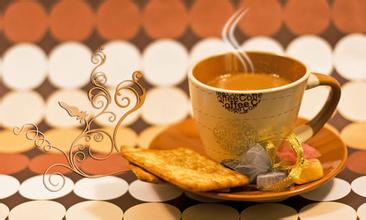A brief introduction to the treatment method of grinding degree and baking degree of Panamanian boutique coffee beans with full tea feeling

The first batch of coffee exported by Panama each year starts in November, and almost all high-quality coffee beans are shipped to France and Finland. Generally speaking, the price of Panamanian coffee belongs to the low and medium price, but its performance in the cup is often as good as that of any famous or even expensive coffee producing area. Panamanian specialty coffee is among the highest selling prices in the international market.
It is famous for producing high quality Arabica coffee. Tedman & McIntyre (TEDMAN&MACINTYRE ESTATE), located in the mountain area of Poggett 4000 feet above sea level, comes from the two earliest coffee families in Panama, the Tedman family and the McIntyre family.
Panamanian coffee is famous for the rosy summer of the Emerald Manor, which is also famous in the Boquete region of its Chiriqui province. Boquete is a town of Chiriqui in the province of Ricki, located near the border between Panama and Costa Rica, near the famous Baru Baru volcano, with rich and fertile soil, climate and soil that are suitable for producing quality coffee.
Panamanian coffee has high traceability of origin. Generally speaking, the origin of coffee in Panama can be traced to a single manor or even to a field on the manor.
The distinction between Panamanian growing areas mainly depends on the sales situation of coffee, but mostly on geographical distribution. Before, coffee was widely spread, and the following areas were actually one area, but these areas were closely linked.
In 1996, Blaise and Rachel visited a farm for sale in the Haramijun area of the Bocketi Valley, and was attracted by the beautiful farm and immediately bought it. This is Esmeralda. Daniel Lou, the third son of Haramiqiong Farm. It is in this farm that Mr. Bidasson grows Geisha coffee, which attracts the attention of the coffee world.
Feicui Manor is famous for its Geisha variety. Rose summer seeds were discovered in the rose summer forests of Ethiopia in 1931 and sent to the Coffee Institute in Kenya, and then introduced to Uganda, Tanzania and Costa Rica, all mediocre. It was not until it was transplanted to Panama in the 1960s that it became a blockbuster after nearly half a century. Beat Bourbon, Kaddura, Kaduai and Tibica on BOP (Best of Panama) in 2005, 2006 and 2007, and won the championship for three years in a row. In 2007, the International famous Bean Cup Test sponsored by the American Fine Coffee Association (SCAA) won the championship again, and the bidding price was sold at US $130 per pound, setting a record for the highest price in the history of competition beans. Rosa, a member of the Tibika family, grew into the king of coffee in the land of Panama after leaving Ethiopia. It successfully conquered the taste buds with rich floral and fruity aromas and bright acidity.
Water washing is the most popular treatment method at present, and most boutique coffee beans will choose water washing method. Washing coffee refining process: harvest → storage tank (removal of impurities and immature beans) → pulp removal machine (removal of pulp and impurities) → fermentation tank (removal of mucous membrane attached to endocarp) → washing pool (selection of light and hard beans) → sun drying field (or dryer) → sheller (removal of endocarp) → grading (electronic bean selector or hand selection, sieve, etc.) → outlet.
The traditional treatment method is difficult to control the changeable fermentation degree of coffee beans. But red wine treatment rules can ensure the quality of coffee beans by controlling PH value, even temperature and humidity, and airtight fermentation makes aroma less volatile.
Next, let's talk about the specific process of fermentation. First of all, Colombian farmers carefully pick coffee cherries and carefully select coffee red fruits to ensure that among the coffee cherries selected for processing, the percentage of immature cherries is less than 2%, defective beans less than 3%, and floating beans less than 5%.
The selected coffee cherries are placed in a specific container by the farmer's uncle, which should have a device similar to a red wine fermentation suppository or a single exhaust valve. In this way, carbon dioxide can be spilled through the device to control the concentration of air in the container. At this time, the coffee cherries in the container are fermented with acetic acid, and the beans are relatively bright, clean and citric acid.
1.1 drying method
Drying is a traditional processing method of coffee beans, the fruits need to be dried in the natural sun after harvest, and some mechanical drying is carried out at the same time. The process is as follows: harvest → sun field (sunlight exposure) → sheller (remove pulp, etc.) → grading (electronic bean selector or hand selection, screen, etc.) → export
Brief introduction to the characteristics of Panamanian Cupid Coffee beans with full Tea taste Anchor Point
Panama has one of the highest volcanoes in Central America: Mount Baru. The Baru volcano has an altitude of more than 3474 meters, and the surrounding land is nutritious and balanced, providing sufficient conditions for the sowing and cultivation of Panamanian coffee. Cold air streams converge and flow above 2262 meters in the Central Mountains, creating a variety of microclimates in the Bouquete and Volcan regions. The microclimate of the Panamanian highlands, as well as fertile soil, abundant precipitation, suitable temperature and height, have become a unique resource for the cultivation of quality coffee in Panama.
Panama Coffee is grown in the western part of the country, near Costa Rica and the Pacific Ocean. The Boquet district of Chiriqui province is the most famous for its coffee, and Vocan,Santa Clara is also famous. Other areas include David, Remacimeinto, Bugaba and Tole. Only coffee grown at elevations between 1300 and 1500 meters above sea level is considered special coffee.
Important Notice :
前街咖啡 FrontStreet Coffee has moved to new addredd:
FrontStreet Coffee Address: 315,Donghua East Road,GuangZhou
Tel:020 38364473
- Prev

A brief introduction to the cultivation of lively and sour Panamanian boutique coffee beans, geographical location, climate and altitude
In 1931, he obscure exported Kenya from Geisha Mountain Mountain in southwestern Ethiopia to Tanzania and Costa Rica, then transplanted to Panama in the 1960s, and then went through nearly half a century before he became a blockbuster, defeating the victorious armies such as Bourbon, Kaddura, Kaduai, Tibica and so on, winning 2005 in one breath.
- Next

A brief introduction to the flavor, taste and aroma characteristics of Indonesian Mantenin boutique coffee beans
During the Japanese occupation of Indonesia during World War II, a Japanese soldier drank mellow coffee in a cafe, so he asked the shopkeeper the name of the coffee, and the boss mistook him for asking where you were from, so he replied: Mandaining. After the war, the Japanese soldiers recalled the manning they had drunk in Indonesia. As a result, 15 tons of Indonesian coffee was transported to Japan, which was very popular. That's the name of Manning.
Related
- Detailed explanation of Jadeite planting Land in Panamanian Jadeite Manor introduction to the grading system of Jadeite competitive bidding, Red bid, Green bid and Rose Summer
- Story of Coffee planting in Brenka region of Costa Rica Stonehenge Manor anaerobic heavy honey treatment of flavor mouth
- What's on the barrel of Blue Mountain Coffee beans?
- Can American coffee also pull flowers? How to use hot American style to pull out a good-looking pattern?
- Can you make a cold extract with coffee beans? What is the right proportion for cold-extracted coffee formula?
- Indonesian PWN Gold Mandrine Coffee Origin Features Flavor How to Chong? Mandolin coffee is American.
- A brief introduction to the flavor characteristics of Brazilian yellow bourbon coffee beans
- What is the effect of different water quality on the flavor of cold-extracted coffee? What kind of water is best for brewing coffee?
- Why do you think of Rose Summer whenever you mention Panamanian coffee?
- Introduction to the characteristics of authentic blue mountain coffee bean producing areas? What is the CIB Coffee Authority in Jamaica?

